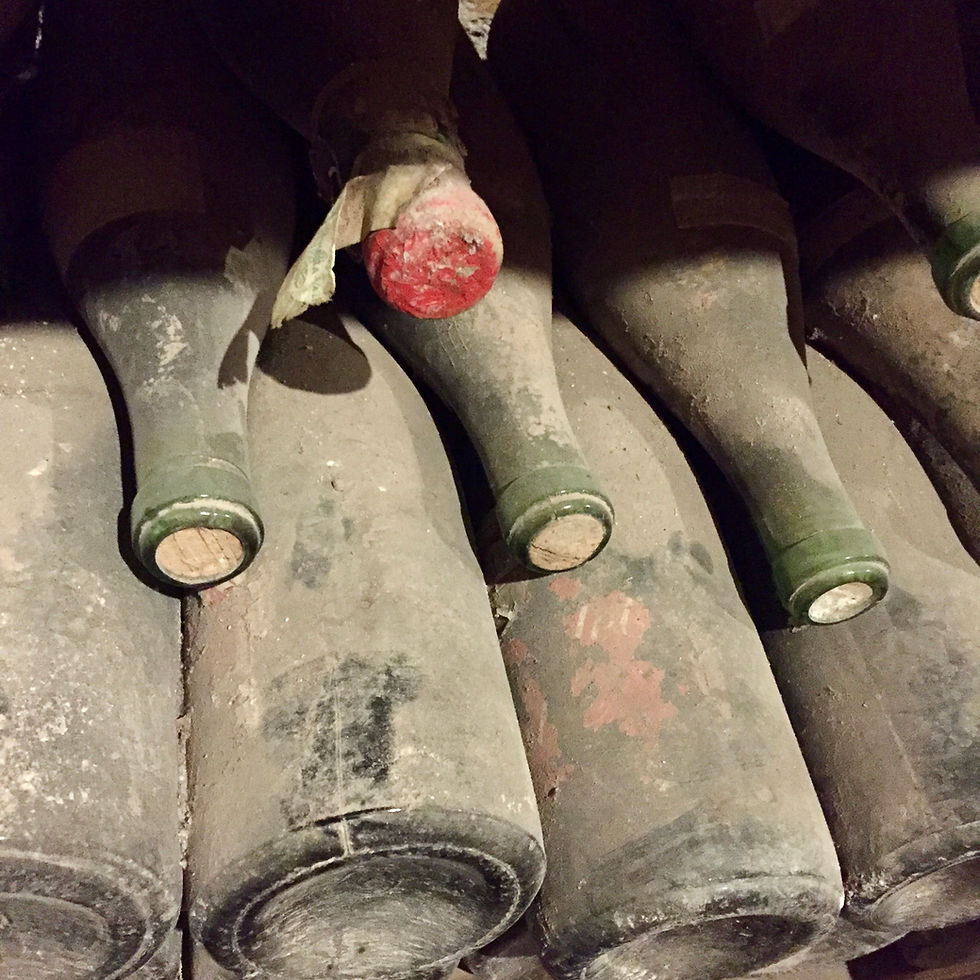White Beauty: a Tuscan debut
- Joanna Simon

- Apr 4, 2018
- 3 min read
Wine exam question: Explain what is meant by white Sangiovese.
When I first heard about a Sangiovese bianco, I didn’t know if we were talking about a white mutation of the Sangiovese grape (like the white Cabernet Sauvignon found in an Australian vineyard in the 1980s and now propagated under the name Shalistin) or a Blanc de Noirs, a white wine made from red Sangiovese grapes. It didn’t take long to find out that it’s the latter.

The debut vintage of Reimitz Sangiovese bianco, the 2016, is made from Sangiovese grapes grown in Klaus Reimitz’s Boronzky vineyard – scarcely more than a hectare at Poggio al Sole, near Badia a Passignano in Chianti Classico (before you ask: he named it Vigna Boronzky after one of his ancestors). The same vineyard, which he acquired in 2006 but which was planted in 1992, is the source for his red Reimitz, the fourth vintage of which, the 2014, has recently been released. Don’t hold your breath. The volumes are tiny (obviously) – 3000 litres – and from the first vintage it has sold out more or less on the spot. It's sold in lots of 24 bottles, six magnums and a double magnum. The tasting in London was held at the members-only club, 67 Pall Mall, but the only place I can find Reimitz listed in the UK (the 2012 vintage) is Christopher Keiller Fine Wine Services. You might have better luck in Germany or at Sotheby’s in New York ($89.95 a bottle for the 2012, sothebyswine.com).
I’ll get to the wines in a moment, but to give some background briefly: Klaus Reimitz is the German winemaker (and former art restorer) who was jointly responsible for 27 years for the Manetti family’s Montevertine estate in Radda in Chianti Classico, including the legendary all-Sangiovese Le Pergole Torte. Along the way he married one of the boss's, Sergio Manetti's, daughters. As with Le Pergole Torte, Klaus Reimitz chooses to declassify his red Reimitz to IGT Toscana, rather than label it Chianti, because he doesn’t want people to think of it just as Chianti Classico. White Chianti doesn’t exist, so there was no choice but to label the white Reimitz ‘Toscana’, but you can be sure Klaus Reimitz wouldn’t label it Chianti even if he could.
Why make a white Sangiovese? Reimitz says he wants it to express what he looks for in a red Sangiovese: “clarity, brilliance, freshness, depth and harmony”. Does that answer the question? Not really, but the answer is in the taste. I hardly know what I was expecting, but I was bowled over by the purity, expressiveness, silky texture and balance of the wine – my unexpurgated tasting note is below. As for the winemaking (which is done at the Poggio al Sole winery), the grapes were hand-picked “quite ripe” in mid-September. The whole bunches were gently pressed and the must went immediately to stainless steel and was inoculated with native yeasts. The new wine was racked and returned to stainless steel for malolactic fermentation, then matured in large (600-litre) oak barrels for 15 months, before bottling without filtration.
Reimitz Sangiovese 2016 (bianco), Toscana
Limpid, very pale straw. Delicate, fresh white blossom and dried flower aromas with white pepper. White pepper on the palate too, with creamy, delicately buttery oak and creamy texture. Wonderful textural quality. Subtle fruit flavours of pear, yellow plum and a hint of apricot, then a suggestion, no more than that, of strawberries and cream. Elegant acidity with a grapefruit note, then white pepper again on the finish. Long, pure, expressive, silky textured.

The red 2014, despite being a very difficult vintage, is also exceptional. It was matured for 30 months in large oak barrels. (Sadly, the bottle of 2013 I tried was corked). Tasting note for the 2014 (unexpurgated):
Reimitz Sangiovese 2014 (rosso), Toscana
Palish but bright garnet/ruby. Fragrant with incense, flowers (iris), spice, red fruits, especially cherry, and a suggestion of woodsmoke. Palate: savoury and sweet, with sweet polished leather and forest floor, sour-cherry, and a touch of pepper. Incredibly elegant, fine-tuned and transparent, with the finest lacework of tannins and acidity. Intensity combined with delicacy.
Photographs by Joanna Simon





Comments